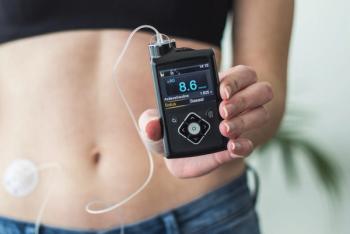
Medicaid generics reimbursement outlook deemed bleak
The Deficit Reduction Act is the federal government's attempt to slow the pace of spending growth in Medicare and Medicaid. Under the act's provisions, the basis for state Medicaid programs' prescription reimbursement to pharmacists changes from average wholesale price (AWP) to average manufacturer price (AMP).
DRA is the federal government's attempt to slow the pace of spending growth in Medicare and Medicaid. Under the act's provisions, the basis for state Medicaid programs' prescription reimbursement to pharmacists changes from average wholesale price (AWP) to average manufacturer price (AMP). The federal upper limit (FUL), which caps the payment to retail pharmacies for multiple-source drugs (generics) for which there are three or more therapeutically equivalent drug products, changes from the use of an AWP system to 250% of AMP. Studies show that AMP is significantly lower than AWP.
Instead of being in the assumed 50% of cost range, reimbursement according to GAO's 77-drug sample, using the estimated AMP-based FULs was, on average, 36% of average retail pharmacy acquisition costs for the first quarter of 2006. "Among those who understand what is actually being proposed by the federal government, there is panic," said Bruce Roberts, R.Ph., executive VP/CEO of the National Community Pharmacists Association. If this rule is implemented, he predicted, pharmacies will close their doors. "If you buy something for a dollar, and you've got to sell it at 36 cents, you don't stay in business very long."
The proposed rule comment period extended through Feb. 20, followed by a review by the Centers for Medicare & Medicaid Services, with the final rule scheduled to be published by July 1. NCPA and other national and state pharmacy groups mobilized their members to submit comments and plead their cases.
In the meantime, efforts continue at both state and federal levels to mitigate disaster, particularly to small pharmacies with a large Medicaid patient base. Assuming a worst-case scenario and the rule being implemented using the GAO numbers, the dispensing fee becomes a primary issue.
The proposed rule does not define dispensing fees, but leaves it to the states to determine the most appropriate fee. The concern is that such leeway may lead states to not increase reimbursement. Although $10 is often cited as an average cost to dispense, the numbers may actually be higher. Maryland, for example, recently came back with a cost-to-dispense study of $11.61, according to Hrant Jamgochian Esq., director of state relations and political action for the American Pharmacists Association. "But what incentive is there for the state to increase the $3.69 dispensing fee up to the full $11.61 if it feels that other states are giving comparable reimbursement [to the $3.69]?"
Newsletter
Pharmacy practice is always changing. Stay ahead of the curve with the Drug Topics newsletter and get the latest drug information, industry trends, and patient care tips.




































































































































